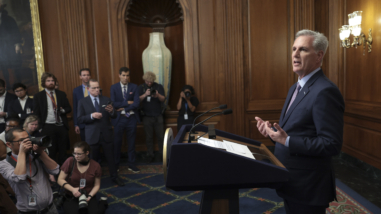As part of the Hewlett Foundation’s Madison Initiative—aimed at improving opportunities for better dialogue, deliberation, and compromise in Congress—I’m spearheading our work around civic engagement and voting. Two questions I’ve been wrestling lately are whether, and to what end, philanthropy might help to improve voter turnout.
Many US foundations and nonprofits operate in this space. In 2011, US funders granted more than $31M directly in support of issues around voting. In 2012, an election year, this figure was closer to $60M, alongside at least another $300M towards civic education and civic engagement efforts focused on specific issues. (These figures pale in comparison, of course, to the more than $6B spent by partisan actors seeking to drive turnout in the 2012 elections.)
There appear to be (at least) three possible goals that the nonprofit sector has pursued around voter turnout:
2. Quality. Improving the understanding and thoughtfulness of voting decisions made by existing voters (i.e., without necessarily expanding the electorate). There is, frankly, much room for improvement here—for example, several recent state-based studies have found that 75% to 83% of voters find ballot measures too complicated and confusing to understand (yet 66% have cast ballots on measures with which they are unfamiliar). Knowledge about candidates, both their stances on policy issues and their approaches to the policymaking process—is similarly lacking.
3. Representativeness. Changing the composition of the electorate to ensure that the voting population more closely mirrors the socio-demographic profile of America at large. On average, US voters tend to be consistently older, whiter, wealthier, and more educated than the broader US population, running the risk that public policies are misaligned with the interests of the average American. Presumably actors with this goal believe (likely rightly) that the policy preferences of a more representative electorate would differ and that policy-makers’ decisions would change to reflect the preferences of a more representative electorate.
These three goals—quantity, quality, and representativeness —are each fairly distinct. And different organizations often have very different goals in mind, even when we’re all talking about “improving voter turnout.” But the extent to which we are pursuing one, two, or all three of these goals isn’t always a focal point in our conversations. Instead, the conversation often jumps quickly to strategies, tactics, and the grantees that are executing them.
Strategic differences may not matter where there is agreement on tactics—similar tactics can advance different strategic ends. But it is nevertheless important for us to be aware of them, if and when the time comes when strategy suggests a change in tactics, and different strategies may suggest different changes. I’ll quote Hewlett Foundation President Larry Kramer here: “Madison and Hamilton had very different goals in mind in the 1780s, but both saw their goals advanced by a stronger federal government, so both pushed for the Constitution. Once it was up and running, the different goals emerged starkly, so they split over what the national government should do.” At least understanding when fellow funders are pursuing different goals, strategies, and tactics can help clarify what can otherwise be a murky conversation.
I continue to be fascinated by the robust and complex field of academic research surrounding questions of voting—a field that started in the 1920s but has grown rapidly in recent years. And I continue to appreciate opportunities to get more specific with colleagues in the democracy reform community about what goals we are pursuing in the voting space, where and how we are pursuing them, and why.




